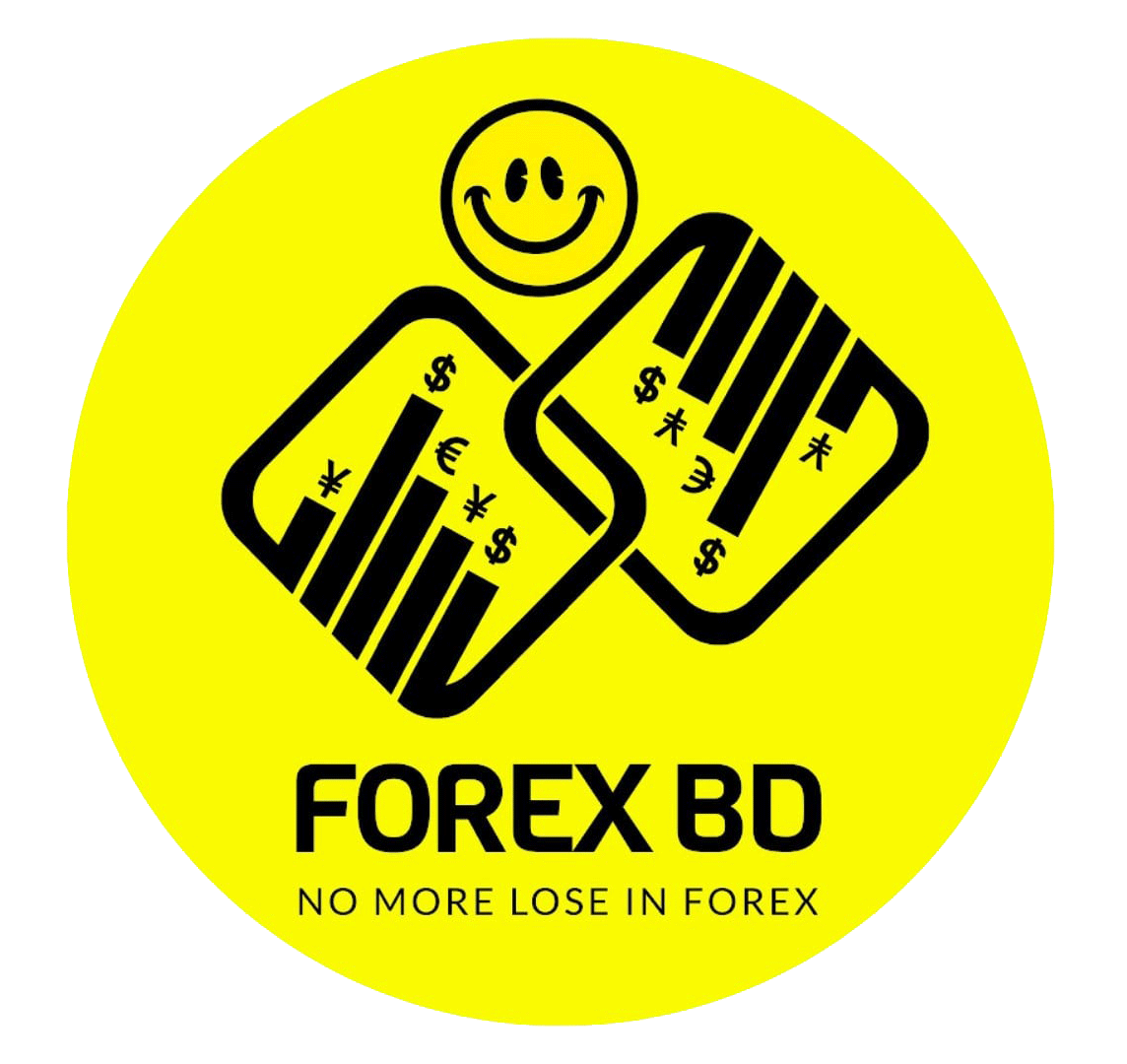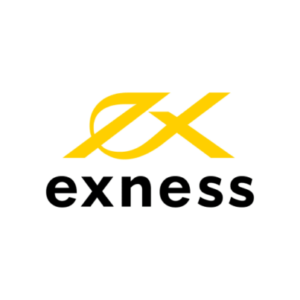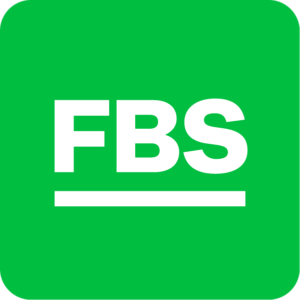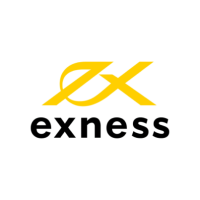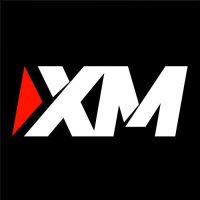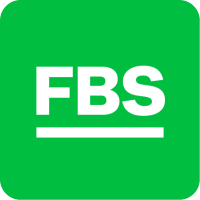The foreign exchange market (Forex) is the largest financial market in the world, with trillions of dollars traded every day. One popular approach to trading in this market is technical analysis. Technical analysis in Forex involves the use of charts and other tools to identify patterns in price movements and make predictions about future price movements. In this article, we will explore the basics of technical analysis in Forex, the different tools and techniques involved, and how to use them effectively in trading.
Table of Contents
- Introduction to Technical Analysis
- The History of Technical Analysis
- Key Principles of Technical Analysis
- Trend Analysis
- Support and Resistance
- Chart Patterns
- Indicators
- Types of Charts
- Line Charts
- Bar Charts
- Candlestick Charts
- Common Technical Indicators
- Moving Averages
- Relative Strength Index (RSI)
- Stochastic Oscillator
- Bollinger Bands
- Fibonacci Retracement
- Building a Trading Strategy with Technical Analysis
- Pros and Cons of Technical Analysis
- Common Mistakes to Avoid
- Conclusion
- FAQs
Introduction to Technical Analysis
Technical analysis is the study of past market data, primarily price and volume, to identify patterns and trends that can be used to predict future price movements. This approach assumes that all relevant market information is reflected in the price, and that the market moves in predictable patterns that can be identified and exploited.
Traders who use technical analysis in Forex rely on charts and other tools to visualize these patterns and make informed trading decisions. By analyzing the historical price data, they can identify potential support and resistance levels, trends, and other signals that can indicate when to enter or exit a trade.
The History of Technical Analysis
The origins of technical analysis can be traced back to the 17th century, when Japanese rice traders developed a system of charting price movements that eventually became known as candlestick charts. In the early 20th century, American traders began to use technical analysis to trade stocks, and it quickly became popular among traders and investors.
Today, technical analysis is widely used in the Forex market, as well as in other financial markets such as stocks, commodities, and futures.
Key Principles of Technical Analysis
There are several key principles that form the foundation of technical analysis in Forex. These include:
Trend Analysis
Trend analysis involves identifying the direction of the market over a given period of time. Traders use various tools and indicators to determine whether the market is in an uptrend, a downtrend, or a range-bound market.
Support and Resistance
Support and resistance levels are key price levels that traders use to identify potential buying or selling opportunities. Support levels are price levels where buyers are expected to enter the market, while resistance levels are price levels where sellers are expected to enter the market.
Chart Patterns
Chart patterns are visual representations of the price movements of a currency pair over time. These patterns can provide traders with important information about potential trend reversals, price breakouts, and other trading opportunities.
Indicators
Technical indicators are mathematical calculations based on the price and/or volume of a currency pair. They are used to identify potential trading opportunities and can provide traders with important signals about market trends and momentum.
Types of Charts
There are several types of charts that traders use in technical analysis. These include:
Line Charts
Line charts are the simplest type of chart, and they plot the closing price of a currency pair over time.
Bar Charts
Bar charts provide more information than line charts, as they show the open, high, low, and closing prices of a currency pair over a given period of time.
Candlestick Charts
Candlestick charts are similar to bar charts, but they use candlestick shapes to represent the price movements of a currency pair. The body of the candlestick shows the opening and closing prices, while the wicks or shadows indicate the high and low prices.
Common Technical Indicators
There are several technical indicators that traders use in Forex. Some of the most common ones include:
Moving Averages
Moving averages are used to smooth out price fluctuations and identify trends. They are calculated by taking the average price of a currency pair over a given period of time.
Relative Strength Index (RSI)
The RSI is a momentum oscillator that measures the strength of a currency pair’s price movement. It is used to identify overbought and oversold conditions, and can be used to identify potential trend reversals.
Stochastic Oscillator
The stochastic oscillator is another momentum indicator that measures the location of a currency pair’s closing price in relation to its recent price range. It is used to identify overbought and oversold conditions and can be used to identify potential trend reversals.
Bollinger Bands
Bollinger Bands are a volatility indicator that use a set of lines above and below the moving average to indicate potential price levels where the market may be overbought or oversold.
Fibonacci Retracement
Fibonacci retracement is a popular tool used to identify potential levels of support and resistance. It is based on the idea that the market will often retrace a predictable portion of a move before continuing in the original direction.
Building a Trading Strategy with Technical Analysis
To build an effective trading strategy using technical analysis, traders must first identify their trading goals, risk tolerance, and trading style. They must then select the appropriate tools and indicators to use based on their goals and preferences.
Traders must also learn to interpret the signals provided by the tools and indicators they use. This involves understanding the context of the market, including factors such as news events, market sentiment, and economic indicators.
Finally, traders must backtest their strategy using historical market data to ensure that it performs well in a variety of market conditions.
Pros and Cons of Technical Analysis
Like any trading approach, technical analysis has its pros and cons. Some of the advantages of technical analysis include its simplicity, versatility, and the fact that it can be used with any financial instrument. It is also a popular approach among traders and is widely used in the Forex market.
However, some traders criticize technical analysis for being too subjective and not providing a complete picture of the market. It also requires a significant amount of time and effort to learn and apply effectively.
Common Mistakes to Avoid
When using technical analysis in Forex, traders should be aware of common mistakes that can lead to poor trading results. Some of these mistakes include:
- Overcomplicating their strategy by using too many indicators or tools.
- Failing to consider the context of the market, such as news events or economic indicators.
- Ignoring risk management and failing to set stop-loss orders.
- Trading based on emotions rather than sticking to their strategy.
Conclusion
Technical analysis is a popular approach to trading in the Forex market. By using charts and other tools to analyze past market data, traders can identify patterns and trends that can help them make informed trading decisions. However, traders must be aware of the potential pitfalls of technical analysis and take steps to avoid common mistakes.
Name
Details
Rating
Regulation: CySEC, FCA, DFSA, FSCA, FSA, CMA
Founded: 2008
Founders: Petr Valov, Igor Lychagov
Year Founded : 2008
Deposit Methods: VISA, MasterCard, Neteller, Skrill, WM, PM, Crypto (MORE)
Leverage: 1:30 | 1:500
Regulation: CySEC, FCA, DFSA, FSCA, FSA.
Min. Deposit: 5 US$
Min. Withdraw : 5 US$
HQ: Sydney, Australia
Platforms: MT4, MT5, ctrader, web trading
Found in: January 30, 2007
Deposit Methods: Bank Wire (BankTransfer), VISA, MasterCard, Neteller, Skrill, WM, PM, Crypto
Year Founded : 2010
Cryptocurrencies:
 Yes
YesDeposit Methods: Local Deposit, Bank Wire (BankTransfer), VISA, MasterCard, Neteller, Skrill, WM, PM, Crypto, USDT
Year Founded : 2010
Cryptocurrencies: (5+) Bitcoin, Litecoin, Ethereum
Deposit Methods: Local Deposit, Bank Wire (BankTransfer), VISA, MasterCard, Neteller, Skrill, WM, PM, Crypto, USDT (MORE)
Year Founded : 2009
Cryptocurrencies:



Deposit Methods: Bank Wire (BankTransfer/SWIFT), VISA, MasterCard, Alipay, Bitcoin, Bitcoin Cash, Boleto, Ether/Ethereum, Litecoin, Local Bank Deposits, M-Pesa, Mobile Money, Monero, PerfectMoney, Ripple, WebMoney
Year Founded : 2009
Cryptocurrencies:



Deposit Methods: Local Deposit, Bank Wire (BankTransfer), VISA, MasterCard, Neteller, Skrill, WM, PM, Crypto, USDT
Year Founded : 2009
Cryptocurrencies:



Deposit Methods: Bank Wire (BankTransfer/SWIFT), VISA, MasterCard, Alipay, Bitcoin, Bitcoin Cash, Boleto, Ether/Ethereum, Litecoin, Local Bank Deposits, Mobile Money, PerfectMoney, WebMoney, USDT
Year Founded : 2011
Cryptocurrencies: (25+) Bitcoin, Litecoin, Ethereum
Deposit Methods: Bank Deposit, VISA, awepay, Bitcoin, FasaPay, Local Bank Deposits, Local Bank Transfers, Neteller, paytm, Skrill, UnionPay, USDT
Leverage: 1:20 | 1:500
Regulation: CySEC, FCA, DFSA, FSCA, FSA.
Min. Deposit: 50 US$
Min. Withdraw : 50 US$
HQ: Australia, Cyprus, and the UK.
Platforms: MT4, cTrader, web trading
EAs/Robots: ✅ Yes | News Trading: ✅ Yes | Scalping: ✅ Yes
Cryptocurrencies: 20+) Bitcoin, Litecoin, Ethereum
Deposit Methods: Local Deposit, Bank Wire (BankTransfer), VISA, MasterCard, Neteller, Skrill, Crypto. USDT
Leverage: 1:20 | 1:500
Regulation: CySEC, FCA, DFSA, FSCA, FSA.
Min. Deposit: 100 US$
Min. Withdraw : 100 US$
HQ: Cyprus, the UK, Australia, and the United States.
Platforms: MT4, cTrader, web trading
EAs/Robots: ✅ Yes | News Trading: ✅ Yes | Scalping: ✅ Yes
Cryptocurrencies: 20+) Bitcoin, Litecoin, Ethereum
Deposit Methods: Local Deposit, Bank Wire (BankTransfer), VISA, MasterCard, Neteller, Skrill, Crypto. USDT
Leverage: 1:20 | 1:500
Regulation: CySEC, FCA, DFSA, FSCA, FSA.
Min. Deposit: 50 US$
Min. Withdraw : 50 US$
HQ: Australia, Cyprus, and the UK.
Platforms: MT4, cTrader, web trading
EAs/Robots: ✅ Yes | News Trading: ✅ Yes | Scalping: ✅ Yes
Cryptocurrencies: 20+) Bitcoin, Litecoin, Ethereum
Deposit Methods: Local Deposit, Bank Wire (BankTransfer), VISA, MasterCard, Neteller, Skrill, Crypto. USDT
Year Founded : 2010
Cryptocurrencies:



Deposit Methods: Local Deposit, Bank Wire (BankTransfer), VISA, MasterCard, Neteller, Skrill, WM, PM, Crypto, USDT
A Forex broker is a financial services company that provides traders with access to the foreign exchange market. The primary function of a Forex broker is to facilitate the buying and selling of currencies by acting as an intermediary between the trader and the market ( Forex BD / BD Forex / ForexBD / ForexBDLTD / Forex bd LTD / @forexbd )..
Forex brokers offer traders a variety of services, including trading platforms, market analysis, and educational resources. They also provide access to leverage, which allows traders to control larger positions with a smaller amount of capital.
Forex brokers can operate in different ways, such as market makers, which set their own bid and ask prices and take the opposite side of their clients’ trades, or as agency brokers, which pass their clients’ orders directly to the market without any intervention.
Choosing a reliable and trustworthy Forex broker is important for traders to ensure that they receive fair and transparent pricing, access to a range of financial instruments, and adequate customer support ( Forex BD / BD Forex / ForexBD / ForexBDLTD / Forex bd LTD / @forexbd )..
Forex brokers play an important role in the foreign exchange market by providing liquidity and enabling traders to participate in the market with ease. Forex brokers offer a wide range of services and tools to traders, including:
Trading Platforms: Forex brokers provide traders with access to trading platforms that allow them to place trades, analyze the market, and manage their trading accounts.
Market Analysis: Forex brokers offer traders access to market analysis, including news, research, and economic data. This can help traders make informed decisions about when to enter or exit the market.
Educational Resources: Forex brokers often provide educational resources, such as webinars, videos, and tutorials, to help traders improve their trading skills and knowledge.
Leverage: Forex brokers offer traders access to leverage, which allows traders to control larger positions with a smaller amount of capital. However, it’s important to note that leverage can increase both potential profits and losses.
Customer Support: Forex brokers provide customer support to help traders with any questions or issues they may have ( Forex BD / BD Forex / ForexBD / ForexBDLTD / Forex bd LTD / @forexbd )..
When choosing a Forex broker, traders should consider factors such as the broker’s reputation, regulation, trading conditions, fees and commissions, and customer support. It’s important to choose a broker that is reliable, transparent, and offers competitive pricing and trading conditions.
Forex brokers provide traders with access to various types of trading platforms, each with its own unique features and advantages. Here are some of the most common types of Forex broker platforms:
MetaTrader 4 (MT4): MT4 is one of the most popular Forex trading platforms, used by millions of traders worldwide. It is known for its user-friendly interface, extensive charting tools, and support for automated trading through Expert Advisors (EAs) ( Forex BD / BD Forex / ForexBD / ForexBDLTD / Forex bd LTD / @forexbd )..
MetaTrader 5 (MT5): MT5 is the newer version of MT4 and offers additional features and improvements, such as more advanced charting tools, additional order types, and support for more financial instruments.
cTrader: cTrader is a trading platform that offers advanced charting tools, support for automated trading, and fast order execution. It is known for its user-friendly interface and customization options.
WebTrader: WebTrader is a browser-based trading platform that allows traders to access the market from any device with an internet connection. It is a popular choice for traders who prefer a simple and easy-to-use platform ( Forex BD / BD Forex / ForexBD / ForexBDLTD / Forex bd LTD / @forexbd )..
Mobile Trading Platforms: Forex brokers also offer mobile trading platforms that allow traders to access the market and manage their positions from their smartphones or tablets. These platforms typically offer a range of features, including real-time quotes, charts, and news updates.
When choosing a Forex broker platform, it’s important to consider factors such as ease of use, charting tools, order types, automated trading options, customization options, and compatibility with your trading style and strategy. Ultimately, the best platform for you will depend on your individual needs and preferences as a trader.
Forex brokers can be categorized into different types based on their business model and the services they offer to their clients. Here are some of the most common types of Forex brokers ( Forex BD / BD Forex / ForexBD / ForexBDLTD / Forex bd LTD / @forexbd ). :
Dealing Desk (DD) Brokers: Dealing Desk brokers, also known as market makers, act as counterparties to their clients’ trades. They provide liquidity to the market by taking the opposite side of their clients’ trades, and may also offer fixed spreads, guaranteed stop-loss orders, and other risk management tools.
No Dealing Desk (NDD) Brokers: No Dealing Desk brokers do not act as counterparties to their clients’ trades, but instead route their orders directly to liquidity providers, such as banks, financial institutions, and other brokers. NDD brokers typically offer variable spreads and faster order execution speeds than DD brokers.
Electronic Communication Network (ECN) Brokers: ECN brokers are similar to NDD brokers, but instead of routing orders to a single liquidity provider, they connect their clients to a network of liquidity providers, which compete to offer the best bid and ask prices. ECN brokers typically charge a commission for their services, but offer some of the tightest spreads and fastest order execution speeds in the market.
Straight Through Processing (STP) Brokers: STP brokers are similar to NDD brokers, but instead of routing orders directly to liquidity providers, they use automated systems to execute orders based on pre-defined trading rules. STP brokers may offer variable or fixed spreads, and may charge a commission or markup on their services.
Hybrid Brokers: Hybrid brokers combine elements of different business models, such as acting as both a market maker and an ECN broker, or offering both fixed and variable spreads. Hybrid brokers may offer a range of services and account types to meet the needs of different types of traders.
When choosing a Forex broker, it’s important to consider the broker’s business model and the services they offer, as well as their reputation, regulation, and customer support. The best broker for you will depend on your individual needs and trading style, as well as the trading conditions and fees offered by the broker.
Forex trading is a popular financial activity that involves buying and selling currencies to profit from the fluctuations in exchange rates. As with any financial activity, it is essential to choose a reputable and regulated broker to ensure the safety of your funds and a fair trading environment. In this article, we will discuss some of the top regulated forex broker houses.
Online forex trading payment methods refer to the various payment options available for forex traders to deposit or withdraw funds from their trading accounts. In the world of forex trading, payment methods play a vital role in facilitating smooth transactions, and it is important to choose a secure and reliable payment method that suits your needs.
Like, Share & Subscribe to Our Official Sites
Contact with Us :
Copyright © 2023 Forex BD
Risk Warning: Trading on financial markets carries risks. Contracts for Difference (‘CFDs’) are complex financial products that are traded on margin. Trading CFDs carries a high level of risk since leverage can work both to your advantage and disadvantage. As a result, CFDs may not be suitable for all investors because you may lose all your invested capital. You should not risk more than you are prepared to lose. Before deciding to trade, you need to ensure that you understand the risks involved and take into account your investment objectives and level of experience.
Disclaimer : Forexbd.ltd is not encouraging anyone to do forex/stock trading, as there are investments and financial risks involved. ForexBD channel or videos are educational and informative. Before deciding to invest in the forex market, you should carefully consider your investment objectives, level of experience, and risk appetite.
#ForexTrading #ForexMarket #ForexBroker #ForexSignals #ForexAnalysis #ForexEducation #ForexPlatform #ForexTools #ForexStrategy #ForexTradingTips #ForexInvesting #ForexNews #CurrencyTrading #OnlineTrading #TradingSoftware #TechnicalAnalysis #FundamentalAnalysis #RiskManagement #MarketResearch #TradingCommunity #ForexTradingSignals #ForexTradingSystem #ForexMarketAnalysis #ForexMarketNews #ForexMarketResearch #ForexTradingStrategies #ForexTrader #ForexTradingSoftware #ForexTradingCourse #ForexTradingForBeginners #ForexTradingPlatform #ForexTradingEducation #ForexTradingAcademy #ForexTradingOnline #ForexTradingCommunity #ForexTradingCharts #ForexTradingIndicators #ForexTradingAccount #ForexTradingCoach #ForexTradingRobot
